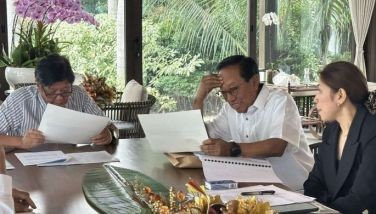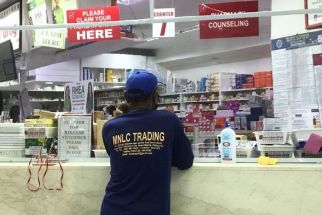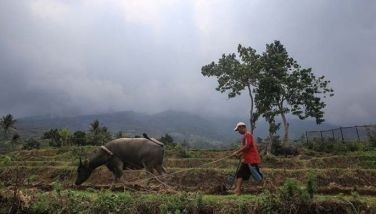Moscow launch set for 'Fun in Phl'
RUSSKY ISLAND, Vladivostok – Manila will launch the tourism campaign “It’s more fun in the Philippines” in Moscow by the third week of this month, the country’s ambassador here said yesterday.
“Last year, the Russians had exhibits with regard to their culture in Manila. Now, it’s our time to showcase our culture here,” Ambassador Alejandro Mosquera told Manila-based journalists covering the APEC summit here.
“A cultural group will be coming here and we will be celebrating the Days of Culture here, we’ll be showcasing the cultural group Bayanihan,” Mosquera said, highlighting the Department of Tourism (DOT)’s campaign to attract more tourists coming to Manila.
“It’s our turn now to have a show here called the Days of Philippine Culture. Tourism is one of the good potentials,” the diplomat said.
Mosquera pointed out that Russian tourists who visit Manila are not the backpacker type who just come and go.
“The Russians travel by families, they stay an average of 14 days and they are not backpackers.
“They spend. So you can imagine, 142 million population, 12 million Russians are traveling every year so we want to get a big slice of it because it was only in recent years have they been going out,” he said.
“Remember that they had a transition in the last decade and if you go down in Vladivostok – not in Moscow – you will see that everyone has a car. They really have a big disposable income,” he reiterated, noting the potential the Russian market has for Philippine tourism.
Data provided by the DOT showed that in 2007, around 4,000 Russians visited the Philippines, but this ballooned to 21,000 last year, proof that the slogan “It’s more fun in the Philippines” is gaining ground.
Profiles of Russian visitors are mostly families who stay for as long as two weeks and spend a lot of money. Among their favorite tourist spots are world-famous beaches like Boracay, Palawan and Bohol and the wakeboarding in Camarines Sur.
Mosquera said a Filipino tourism operator based here is in fact trying to arrange a direct flight from Manila to this coastal city, shorter than taking the Moscow route which is eight hours by plane.
It only takes five hours from Manila to Vladivostok, except that there is usually a connecting flight.
“We’d like to say Vladivostok is our entry point. It takes only five hours from Manila,” he said.
And while some Filipinas work as househelpers here, Mosquera said the Filipino community is actually increasing, and that those former students in Moscow who stayed put are now employed in embassies and private companies, and speak Russian.
“The other group of people that we have here are professionals. They are connected with the multinationals here or big Russian private companies. You might also want to note that we have some chefs here,” he said proudly.
“And they work in big hotels and restaurants. And of course, we also have the household service workers. I think the bulk of our kababayans are working with Russian households,” he said.
Highly skilled Filipinos are also not scarce here, where technical personnel include engineers, operators and the like, and most of them are employed in the nearby island of Sakhalin, where infrastructure projects abound.
“There are private companies, Internet companies, we have contracts there. And they have hired our people. They are engineers, pipe fitters, operators of equipment, welders, and many other skilled people,” Mosquera said.
In fact, some Filipinas are married to Russian nationals.
“At one time I think there are 50 and at one time there are a hundred people. And by the way, we also have Filipinos here in Vladivostok. I was told and we know that we have some 10 Filipinos here. And these Filipinos are married to Russian nationals,” he said.
Around 2,000 Filipinos, according to him, are married to Russian nationals.
President Aquino stated in his State of the Nation Address last July that the improvement of government infrastructure across the country is “intertwined with the growth of our tourism industry.”
He noticed that for the nine-year term of his predecessor, Gloria Macapagal-Arroyo, the administration only managed to add 1.3 million tourist arrivals from the time she took over in 2001, where it only recorded 1.8 million tourist arrivals.
This pales in comparison to the time he assumed office in July 2010, six months of which were already under his watch.
“Under our administration, we welcomed 2.1 million tourist arrivals by June 2012,” Aquino said.
“More will arrive during peak season, before the end of the year, so I have no doubt that we will meet our quota of 4.6 million tourist arrivals for 2012. This means that we will have a year-on-year increase of 1.5 million tourists,” he added.
“The bottom line: In two years, we would have had a bigger growth in tourist arrivals, compared to the increase charted by the previous administration in their nine years. We are not singing our own praises; we are merely stating the truth,” Aquino said.
The Aquino government wants the Philippines to achieve 10 million tourist arrivals by 2016.
- Latest
- Trending
































